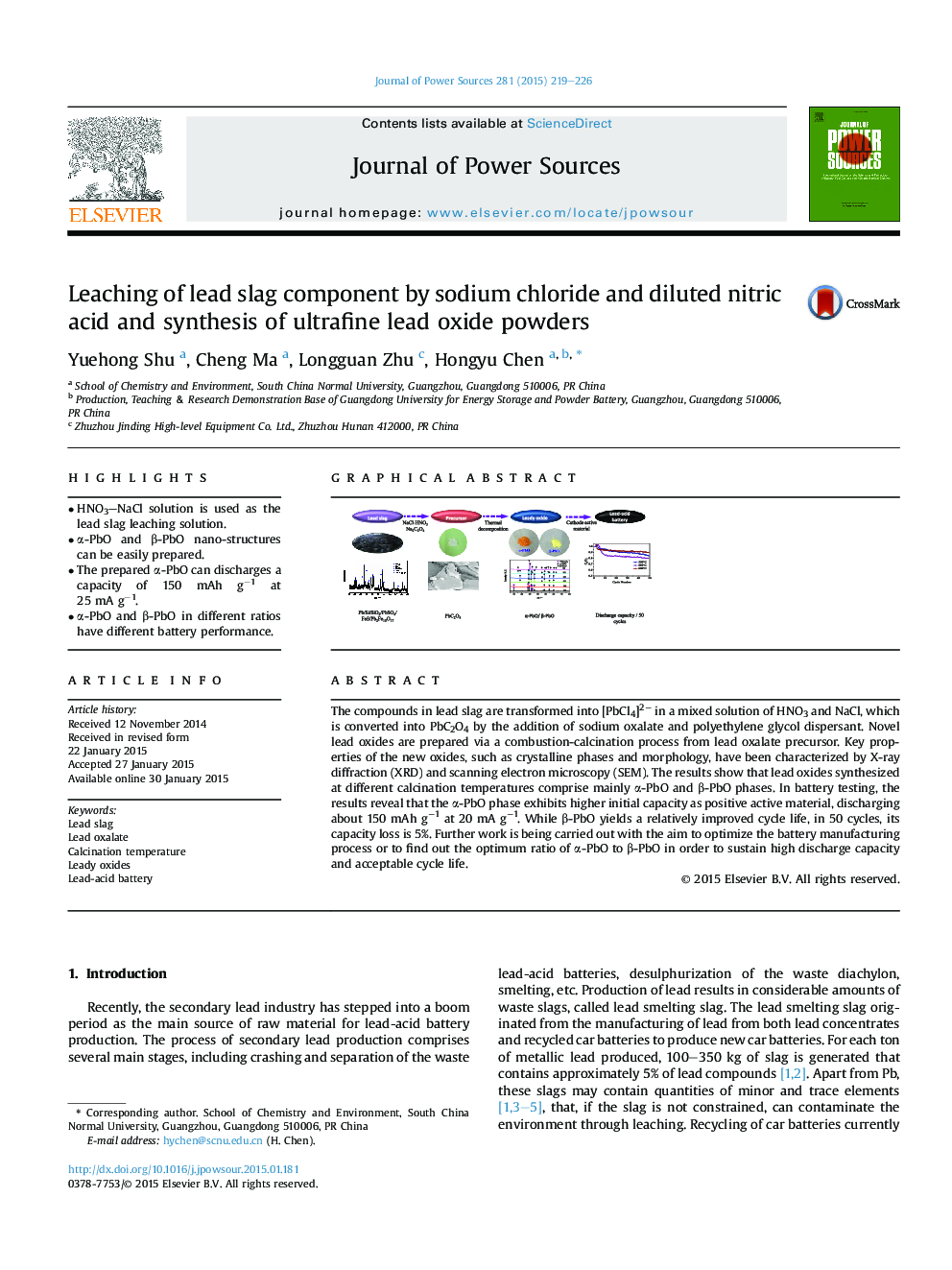| کد مقاله | کد نشریه | سال انتشار | مقاله انگلیسی | نسخه تمام متن |
|---|---|---|---|---|
| 1286309 | 1497951 | 2015 | 8 صفحه PDF | دانلود رایگان |
• HNO3–NaCl solution is used as the lead slag leaching solution.
• α-PbO and β-PbO nano-structures can be easily prepared.
• The prepared α-PbO can discharges a capacity of 150 mAh g−1 at 25 mA g−1.
• α-PbO and β-PbO in different ratios have different battery performance.
The compounds in lead slag are transformed into [PbCl4]2− in a mixed solution of HNO3 and NaCl, which is converted into PbC2O4 by the addition of sodium oxalate and polyethylene glycol dispersant. Novel lead oxides are prepared via a combustion-calcination process from lead oxalate precursor. Key properties of the new oxides, such as crystalline phases and morphology, have been characterized by X-ray diffraction (XRD) and scanning electron microscopy (SEM). The results show that lead oxides synthesized at different calcination temperatures comprise mainly α-PbO and β-PbO phases. In battery testing, the results reveal that the α-PbO phase exhibits higher initial capacity as positive active material, discharging about 150 mAh g−1 at 20 mA g−1. While β-PbO yields a relatively improved cycle life, in 50 cycles, its capacity loss is 5%. Further work is being carried out with the aim to optimize the battery manufacturing process or to find out the optimum ratio of α-PbO to β-PbO in order to sustain high discharge capacity and acceptable cycle life.
Figure optionsDownload as PowerPoint slide
Journal: Journal of Power Sources - Volume 281, 1 May 2015, Pages 219–226
